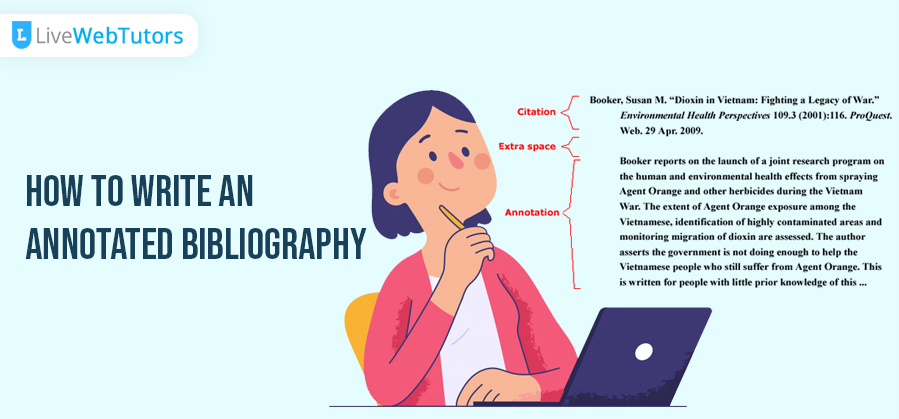

Academic documents like dissertations, research papers, theses, et al. are a blend of various important elements, which work together to bring out the document as one accomplished piece. One such important element of these academic documents is a bibliography. As you all might be aware that a bibliography is nothing but a list of all the references that you have referred to while creating a particular document. When we use some external sources to cite in our document, a reference list is usually included at the end of the document, so as to make the readers aware of all the different sources that the author has used in their document, and this list is called the bibliography.
A bibliography is an important tool in creating a perfect and significant document. It helps the writer to acknowledge all the different crucial works that they have used in their document and gives them a space to credit the creators of these sources. Also, a bibliography is important from readers’ perspective as it helps them to know what all sources, works, and documents have been used by the author to create the particular document. Hence, it becomes important to create a perfect bibliography for a document. However, bibliographies differ as per the style of formatting of the document.
There are simple bibliographies with a simple list of all the sources referred to in the document. And there is annotated bibliography. If you have been struggling to create a perfect annotated bibliography, then this article is for you.
Livewebtutors brings you the perfect guide which will help you in creating a flawless annotated bibliography.
An annotated bibliography is also a list of the references and sources used in a particular document with the exception that each reference is followed by a small description of the particular source. When you insert a reference in a bibliography, in its annotated version, it is followed by a brief about the source referred to. This description is not too long. It contains four to six sentences and does not go beyond a single paragraph.
Now, the question which must come to your mind is – what is included in that description? The description could be brief about the particular source as what makes this source important for it to be used as a reference and how it helped the writer in bringing crucial information to the fore. Therefore, an annotated bibliography is a descriptive form of creating a reference list. If you are still confused, do not worry at all as we will be learning how to create this annotated version of bibliographies.
Well, by now you must have figured out that the most prominent difference between the two forms of bibliographies is that the regular one is just a list of all the references arranged in a sequential manner. On the other hand, the annotated bibliography contains the description of every reference along with its details. Therefore, these two types of bibliographies vary as per their requirements.
Yes, you read that right! Annotated biographies also vary within themselves. There are mainly two prominent types of annotated biographies. Let’s check them out:
As the name itself is suggestive of that this particular type of bibliography provides a comprehensive overview about a particular reference. It contains details about the source as how this source is crucial to the topic of the main document, or how it adds substance to the particular document. Here, the author describes the importance of that particular source, and how it helped the authors to get some answers to the tricky questions associated with the subject matter. It also provides the highlights of the source, its main arguments, thoughts, ideas, etc. Thus a descriptive annotated bibliography helps in providing detailed information to the readers about a particular source.
Bild, Merkel and the Culture Wars: The Inside Story of Germany’s Biggest Tabloid. (2020, July 16). The Guardian. Retrieved from
https://www.theguardian.com/world/2020/jul/16/bild-zeitung-tabloid-julian-reichelt-angela-merkel-germany
The opinion piece from the leading news website The Guardian describes the rise of the biggest news agency in one of the biggest European economies, Germany. The article talks about the complicated relationship between the media and the state. It reflects how journalism and the active media could shape the state’s policy. It also talks about the rise of the right-wing phenomenon globally and how it is impacting the media. It is a general piece aimed at describing the growth of Germany’s one of the biggest news agencies. It is a general piece of information, aimed at making the general public informed about media, the state, and their affairs.
The above example shows what a reference looks like in a descriptive annotated bibliography. Analyze the above example and observe how the major points about the source have been summed up in a few sentences to make the readers aware of the details and relevance of the particular source.
The analytical or critical annotated bibliography not only offers a descriptive overview of the referred source but also analyzes the validity and credibility of the arguments made in it. It analyzes the weak and strong areas of the article and also provides this critical assessment to the readers. This type of annotated bibliography allows the author to critically assess the relevance and significance of a source and provides them the space to describe it to their readers. This is the most common type of annotated bibliography that students, writers, and professionals are expected to undertake.
Scientists put forward a plan to create a universal species list. (2020, July 07). The Guardian. Retrieved from
https://www.theguardian.com/environment/2020/jul/07/scientists-put-forward-plan-to-create-universal-species-list-aoe
The above-mentioned article describes how the global scientific community is aiming at creating a universal database of all the existing and extinct species. This step is aimed at compiling a common database for reference in order to prevent or leave any scope of confusion. On one hand, the article appears to be quite fascinating while describing what a complied species list would look like. But on the other, it fails to clear the air around how it would be made possible. Thus the article does not talk about the challenges of this ambitious project. The article is aimed at environmentalists, scientists, or people belonging to a particular field of science and biodiversity.
The above example shows what a reference in an analytical annotated bibliography looks like. Assess it and note down the important aspects as how the author has precisely described and analyzed the important points from the referred article.
Now comes the main part of learning to create a perfect annotated bibliography. It is simple but requires some steps to be followed to ensure absolute perfection. Let us check out the main steps of creating a perfect annotated bibliography.
This is how you will accomplish a perfect annotated bibliography. Also, an annotated bibliography is formatted as per the particular formatting style which you might be using in your document like the APA style, or the Chicago or MLA style of formatting.